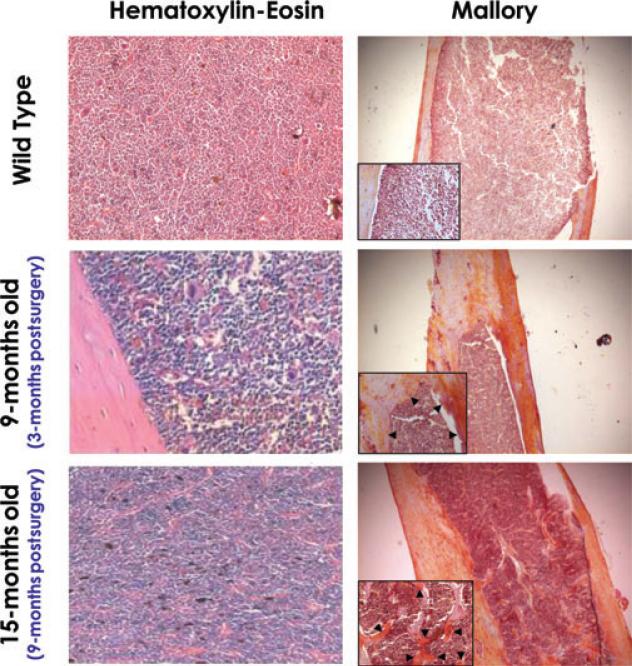Figure 4.
Splenectomy induces bone formation increasing the thickness of the bone walls and the number of trabeculae present within the medulla. Hematoxylin-eosin (left panels) and Mallory (right panels) staining of long bones from representative 12- to 15-month-old wild-type mice (top panels) and from wild-type mice 3 (middle panels) and 9 months (bottom panels) after splenectomy. The age of the mice is indicated, for convenience. Splenectomy did not change the marrow cellularity, but increased the thickness of the bones, the numbers of trabeculae infiltrating the bone cavity, and the staining (in yellow) after Mallory (arrowheads). Results are representative of those obtained in two untreated wild-type and in three (3-month postsurgery) and two (9-month postsurgery) splenectomized mice, respectively. Magnification is 20× in the panels and 40× in the inserts.

